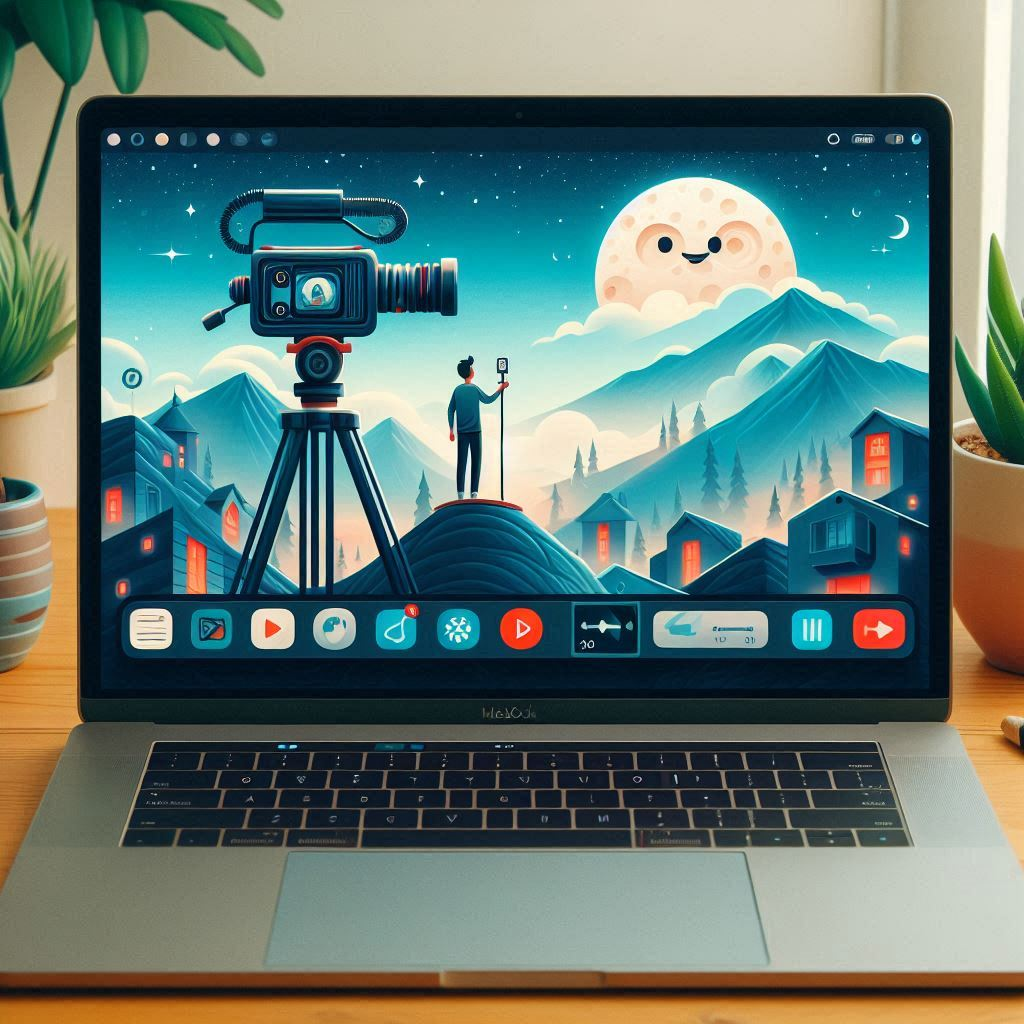How to Screen Record on a MacBook Using Built-In Tools: A Step-by-Step Guide
Screen recording on your MacBook is a handy feature that allows you to capture your screen activity for tutorials, presentations, or gameplay. Whether you’re creating instructional videos, sharing a software walkthrough, or recording a video call, the built-in tools on your MacBook make it easy and efficient. In this guide, we will explore how to use both QuickTime Player and the Screenshot utility to record your screen effortlessly.
Method 1: Using QuickTime Player to Screen Record
QuickTime Player is a versatile multimedia application that comes pre-installed on all MacBooks. It not only plays videos but also allows you to record your screen.
1.1 How to Use QuickTime Player for Screen Recording
Steps:
- Step 1: Open QuickTime Player. You can find it in the Applications folder or search for it using Spotlight (press
Command + Spaceand type “QuickTime Player”). - Step 2: In QuickTime, click on File in the menu bar at the top left corner and select New Screen Recording.
- Step 3: A new window will pop up with screen recording options. Here, you can choose to record with or without audio:
- Click the arrow next to the red record button to select your audio source. If you want to include audio, select your Microphone.
- Step 4: Click the red Record button. You’ll see a prompt asking whether you want to record the entire screen or just a portion:
- To record the entire screen, click anywhere on the screen.
- To record a portion of the screen, click and drag to select the area you want to record, then click Start Recording.
- Step 5: To stop recording, click the Stop button in the menu bar at the top of the screen (it looks like a small square). Alternatively, you can press
Command + Control + Esc. - Step 6: After stopping the recording, QuickTime will automatically open the recording file. You can then play it back, edit it, or save it:
- Click File > Save, name your file, choose the location, and click Save.
Method 2: Using the Screenshot Utility to Screen Record
In macOS Mojave (10.14) and later, Apple introduced a built-in Screenshot utility that also includes screen recording capabilities.
2.1 How to Use the Screenshot Utility for Screen Recording
Steps:
- Step 1: Open the Screenshot utility by pressing
Command + Shift + 5. A control panel will appear at the bottom of your screen. - Step 2: In the control panel, you’ll see options to take a screenshot or record your screen. Click on the Record Entire Screen or Record Selected Portion button, depending on your needs.
- Step 3: If you choose to record a portion, click and drag to select the area of the screen you wish to capture. Once you have your selection, click the Record button that appears.
- Step 4: To stop the recording, click the Stop button in the menu bar (the same as with QuickTime) or press
Command + Control + Esc. - Step 5: After stopping the recording, a thumbnail of the recording will appear in the bottom-right corner of your screen. Click on it to preview, edit, or share it. You can also choose to save it by clicking File > Save.
Recording Tips for High-Quality Screen Captures
To ensure that your screen recordings are of high quality and professional-looking, consider the following tips:
1. Optimize Your Display Settings
- Adjust your MacBook’s display resolution for sharper video. Go to System Preferences > Displays and select a higher resolution if needed.
2. Use a Quality Microphone
- For better audio quality, consider using an external microphone instead of the built-in one. This is especially important for tutorials and presentations.
3. Prepare Your Screen
- Close unnecessary applications and tabs to minimize distractions. Make sure that the content you want to record is clearly visible.
4. Plan Your Recording
- Script or outline what you want to say or demonstrate during the recording. This helps keep the video focused and reduces the need for extensive editing later.
5. Record in a Quiet Environment
- Reduce background noise to ensure clear audio. Choose a quiet location or use noise-canceling headphones if you are recording voiceovers.
FAQs on Screen Recording on a MacBook
Can I Record System Audio on My MacBook?
The built-in tools do not allow recording system audio. However, you can use third-party applications like Soundflower or BlackHole to capture system audio.
What File Formats Can I Save My Screen Recordings In?
QuickTime saves recordings in the MOV format by default. You can also export your video to other formats using video editing software.
Can I Edit My Screen Recordings?
Yes, you can use iMovie or QuickTime Player for basic editing, such as trimming and merging clips. For more advanced editing, consider using Final Cut Pro or Adobe Premiere Pro.
Conclusion
Screen recording on your MacBook is a straightforward process thanks to the built-in tools like QuickTime Player and the Screenshot utility. Whether you’re creating tutorials, recording presentations, or capturing gameplay, these methods allow you to produce high-quality screen recordings effortlessly. Follow this guide to master screen recording on your MacBook, and don’t forget to experiment with the various settings to find what works best for your needs!







Be First to Comment